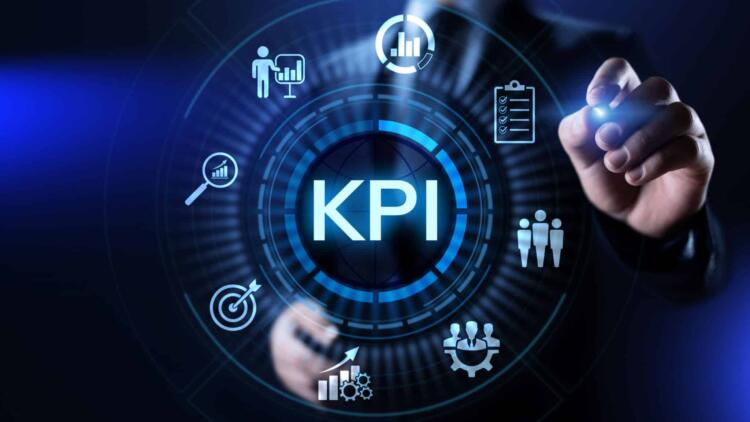
A Guide to Recognizing, Establishing, and Monitoring the Most Important Key Performance Indicators for Your Corporate Agreements
Intelligent Enterprise Contract Management (IECM) is vital for organizations seeking to enable frictionless and efficient performance, mitigate risks, and adhere to rigorous compliance across regulatory requirements. All of these gains are monitored and optimized using a precise set of performance metrics. These Key Performance Indicators – KPIs – measure the health and efficiency of your contract management processes while also providing valuable information and insights for continuous improvement.
Below are the KPIs that enable you to identify, establish, and monitor the most critical KPIs for efficiently managing corporate agreements.
Table of Contents
- Introduction to Contract Management KPIs
- Why KPIs Matter for Contract Management Performance
- Types of KPIs in Contract Management
- How to Identify Relevant KPIs for Your Organization
- Establishing Key Contract Management KPIs
-
- Cycle Time KPIs
- Risk Management KPIs
- Compliance KPIs
- Financial Performance KPIs
- Vendor/Supplier Performance KPIs
- Monitoring and Reporting KPIs
-
- Tools for Tracking Contract Management KPIs
- Best Practices for KPI Reporting
- Optimizing Contract Management Using KPIs
- Challenges in Measuring Contract Management Performance
- Conclusion
Introduction to Contract Management KPIs
Contract management involves overseeing the entire lifecycle of a contract—from creation and negotiation to execution, performance monitoring, and renewal or termination. This complex process requires close attention to detail and managing a wide array of agreements simultaneously. Organizations risk inefficiencies, compliance issues, or financial losses without a structured way to measure and analyze performance.
Key Performance Indicators (KPIs) are measurable values that help organizations assess the success of their contract management activities. These indicators offer quantifiable insights into whether contracts meet their intended goals, such as ensuring timely delivery, reducing risks, maintaining compliance, and achieving financial targets.
Why KPIs Matter for Contract Management Performance
KPIs provide clear, data-driven insights into how well your contract management processes are performing. Measuring and monitoring these metrics is critical for several reasons:
- Risk Mitigation: KPIs allow you to spot potential risks early, whether related to contract compliance, financial exposure, or vendor performance.
- Operational Efficiency: By identifying bottlenecks in your contract workflows, you can improve efficiency and reduce delays in contract approval and execution.
- Cost Control: Tracking financial metrics can help organizations ensure that contracts align with their budget, preventing overspending or missed economic opportunities.
- Compliance Assurance: Compliance-related KPIs help monitor adherence to legal, regulatory, and internal policy requirements.
- Performance Improvement: KPIs reveal whether vendors, suppliers, or internal teams are meeting their contractual obligations, allowing for performance adjustments as needed.
Types of KPIs in Contract Management
Different KPIs can be used to measure various aspects of contract management performance. These fall into several categories:
- Cycle Time KPIs: Measure how long it takes to complete specific stages of the contract lifecycle.
- Risk Management KPIs: Focus on the level of risk exposure within contract portfolios.
- Compliance KPIs: Assess the degree to which contracts comply with regulatory, legal, and internal policies.
- Financial KPIs: Evaluate contract agreements’ financial health and success.
- Vendor/Supplier Performance KPIs: Monitor the performance of third parties in fulfilling contractual obligations.
How to Identify Relevant KPIs for Your Organization
Choosing the right KPIs depends on your organization’s objectives and the complexity of your contract portfolio. When selecting KPIs, consider:
- Strategic Goals: Align KPIs with your organization’s strategic priorities, such as minimizing legal risk, optimizing vendor relationships, or ensuring cost control.
- Contract Volume and Complexity: Larger organizations with numerous and complex contracts will need more sophisticated KPIs than smaller businesses.
- Industry Regulations: In highly regulated industries (e.g., healthcare, finance), compliance KPIs are often more critical.
- Risk Tolerance: If your organization deals with high-risk contracts, it may need more granular risk management KPIs to track potential vulnerabilities.
- Stakeholder Expectations: Consider the reporting needs of key stakeholders, including senior management, legal teams, and procurement departments
Establishing Key Contract Management KPIs
Below are some of the most important KPIs you can establish to measure contract management performance. These KPIs are categorized based on various stages and objectives of the contract management process.
Cycle Time KPIs
Cycle time KPIs measure the efficiency of your contract management process by tracking how long it takes to complete key stages in the contract lifecycle.
- Contract Creation Time: Measures the time it takes from the request for a contract to the delivery of the first draft.
- Negotiation Cycle Time: Tracks the duration of contract negotiations from the initial draft to the finalized agreement.
- Approval Time: Measures the time it takes to get necessary approvals from all parties, including internal departments and external stakeholders.
- Contract Execution Time: Monitors the time from contract approval to signing by all parties involved.
- Contract Renewal Cycle Time: Tracks the time it takes to renew a contract once it nears expiration.
These KPIs help organizations identify bottlenecks, allowing them to optimize workflow efficiency.
Risk Management KPIs
Risk management KPIs assess the level of exposure and potential risks within a contract portfolio, helping organizations identify, mitigate, and manage contractual risks.
- Percentage of Contracts with High-Risk Clauses: Measures how many active contracts contain clauses that expose the organization to significant legal, financial, or operational risk.
- Risk Mitigation Plan Adherence: Tracks the percentage of contracts with documented risk mitigation plans that are followed consistently.
- Third-Party Risk Exposure: Monitors the level of risk introduced by vendors, suppliers, or partners involved in the contract.
By monitoring these KPIs, organizations can reduce their overall risk exposure, ensuring contracts are aligned with the company’s risk tolerance.
Compliance KPIs
Compliance KPIs are vital for organizations operating in regulated industries or for those with strict internal policies that govern contracts. These metrics ensure that agreements comply with legal, regulatory, and corporate guidelines.
- Percentage of Contracts Meeting Compliance Standards: Measures the percentage of contracts that are fully compliant with industry regulations, legal requirements, and internal policies.
- Audit Findings: Tracks the number of non-compliant findings or issues identified during audits of contract portfolios.
- Timely Compliance Reviews: Measures how often compliance reviews are conducted within the recommended timeframes.
By keeping compliance on track, organizations can avoid costly legal penalties and ensure contracts are enforceable.
Financial Performance KPIs
Financial performance KPIs monitor the financial health of contracts, ensuring that the company stays within budget and maximizes revenue or savings.
- Cost Savings from Contracts: Measures the amount of cost savings achieved through negotiated discounts, pricing structures, or contract renewals.
- Revenue from Contracts: Tracks the total revenue generated from customer or vendor contracts.
- Contract Value at Risk: Monitors the percentage of contracts that are at risk of underperformance due to financial or operational challenges.
- Payment Term Compliance: Measures how often payments (inbound or outbound) adhere to the terms agreed upon in the contract.
Financial KPIs provide clarity on how well contracts are contributing to the company’s bottom line, helping identify underperforming agreements that may need renegotiation
Vendor/Supplier Performance KPIs
For organizations heavily reliant on external vendors and suppliers, monitoring their performance through KPIs is essential. These metrics ensure that suppliers are fulfilling their contractual obligations.
- On-Time Delivery Rate: Measures the percentage of contracts where suppliers meet agreed delivery timelines.
- Percentage of Contracts with Penalties or Breach: Tracks how often vendors breach contracts or incur penalties for non-compliance or poor performance.
- Supplier Satisfaction Rate: Assesses overall satisfaction with supplier performance based on feedback from internal stakeholders.
Vendor performance KPIs provide organizations with insights into whether their partners are delivering the value promised in their contracts.
Monitoring and Reporting KPIs
Establishing KPIs is just the first step. To fully benefit from these performance metrics, legal and procurement teams must monitor KPIs regularly and report on them to key stakeholders.
Tools for Tracking Contract Management KPIs
Contract Lifecycle Management (CLM) Software: Many CLM platforms come with built-in KPI tracking and reporting features, making it easier to monitor contract performance in real time.
Business Intelligence Tools: Advanced BI tools allow organizations to gather data from multiple sources and present it in customizable dashboards and reports.
Automated Alerts and Reminders: These tools notify stakeholders when a KPI falls below a predefined threshold, ensuring immediate corrective action.
Best Practices for KPI Reporting
Consistent Monitoring: Regularly review KPI reports to ensure continuous performance tracking.
Clear Communication: Make KPI reports accessible and easy to understand for non-legal and non-technical stakeholders.
Actionable Insights: Use KPI data to drive actionable insights and decisions. For example, a rise in negotiation cycle time may prompt a review of contract approval processes.
Optimizing Contract Management Using KPIs
Once you’ve established and started tracking KPIs, it’s essential to use the data effectively. Here are some ways to optimize contract management using KPIs:
- Benchmarking: Compare current KPIs to historical data or industry benchmarks to identify trends and opportunities for improvement.
- Continuous Improvement: Implement a culture of continuous improvement by regularly refining contract management processes based on KPI performance.
- Proactive Risk Management: Use risk-related KPIs to identify potential issues
Ready to take your contract management to the next level? Gainfront’s Contract Lifecycle Management solution offers powerful tools to track performance, ensure compliance, and drive efficiency at every stage. Streamline your processes and gain full visibility into your contracts with Gainfront. Get started today!
Rahul Asthana has a PhD in Operations Management from the Anderson School at UCLA. He has 25 years of experience in supply chain management, starting his career in IBM working in supply chain operations. He then moved into product management and product marketing of supply chain software while at SAP and Oracle. He manages product strategy and product management at Gainfront. In terms of hobbies outside of work, he really enjoys tennis. Follow Rahul Asthana on Linkedin!
